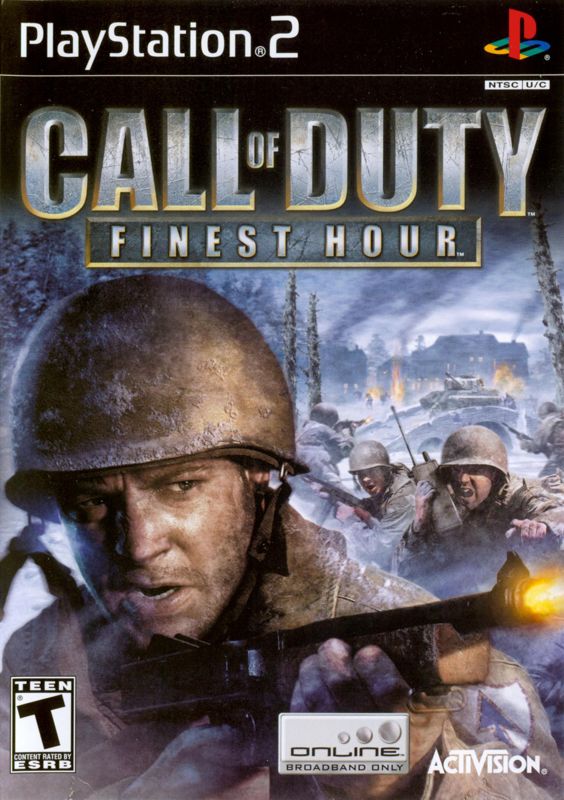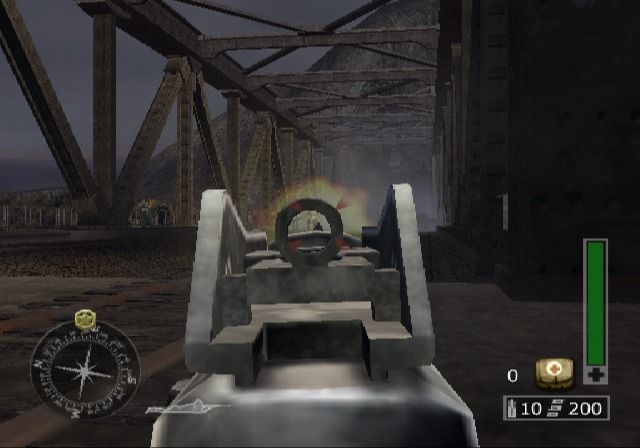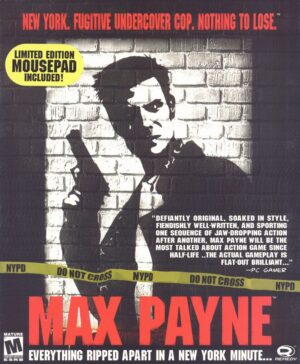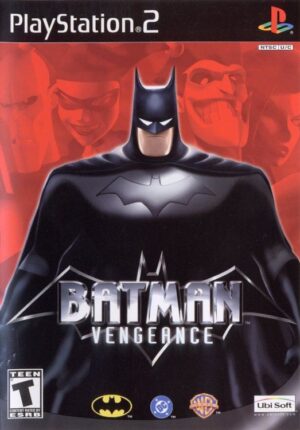Retro Replay Review
Gameplay
Call of Duty: Finest Hour builds its gameplay around tightly scripted, story-driven sequences that plunge you straight into the heart of World War II combat. Rather than offering an open battlefield sandbox, the game guides you through intense set-pieces, forcing you to adapt quickly as the action shifts from urban streets to snow-covered forests. This linear structure amplifies the drama, keeping you on your toes as enemy flanking maneuvers and sudden ambushes remind you that no two firefights feel the same.
(HEY YOU!! We hope you enjoy! We try not to run ads. So basically, this is a very expensive hobby running this site. Please consider joining us for updates, forums, and more. Network w/ us to make some cash or friends while retro gaming, and you can win some free retro games for posting. Okay, carry on 👍)
One of the game’s standout features is its trio of playable perspectives. You’ll switch between an American soldier in North Africa, a British gunner in occupied Europe, and a Soviet infantryman on the Eastern Front. Each viewpoint introduces unique mission objectives—whether it’s manning a heavy machine gun, leading a tank convoy or clearing trenches with your squad. These role changes keep the pacing fresh and let you experience different facets of WWII warfare without ever feeling repetitive.
Vehicle segments play a pivotal role in Finest Hour’s gameplay, offering brief but exhilarating departures from foot-soldier combat. Whether you’re strafing enemy convoys in a Bren carrier or laying down suppressing fire from a Sherman tank, these sequences add variety and scale to the action. While the vehicle controls aren’t as deep as dedicated driving sims, they’re intuitive enough to make enemy encounters feel explosive and immediate.
Despite its cinematic flair, Finest Hour’s gameplay isn’t without trade-offs. The heavy scripting can sometimes lead to moments where you feel railroaded—if you miss a jump cue or fail to hit a scripted objective, you might find yourself retracing steps rather than freely exploring. Still, for players seeking a fast-paced, blockbuster WWII shooter experience on consoles, the balance of infantry and vehicular combat ensures hours of heart-pounding engagement.
Graphics
For a title released at the dawn of console-based Call of Duty, Finest Hour’s visuals made a strong first impression. Battlefield environments—from sun-baked desert outposts to frostbitten Soviet villages—are rendered with surprisingly detailed textures and convincing scale. Though modern players may notice less foliage density and simpler shaders, the sense of immersion remains powerful thanks to carefully crafted set pieces and atmospheric lighting.
The game’s depiction of weaponry and military hardware stands out, too. Rifles, pistols, grenades, and tanks all boast weighty models and satisfying muzzle flashes. Tracer rounds streak across the sky and dust kicks up around your boots, providing tactile feedback that reinforces every pull of the trigger. These visual flourishes might seem modest by today’s standards, but they were instrumental in setting the tone for later entries in the franchise.
Character models and animations, while blockier than modern titles, do a credible job of selling the drama of war. Soldiers duck behind cover, reload with mechanical precision, and react believably to explosions. Facial detail is limited, but knowing the hardware constraints of the era, the varied soldier uniforms and gear go a long way toward making each theater of war feel distinct.
Complementing the visuals, Finest Hour employs a stirring orchestral score and realistic sound effects. The crack of a rifle, the whine of approaching shells, and distant cries of “Enemy at the wall!” all combine to heighten the graphical presentation. Even if the draw distance is capped and polygon counts are modest, the synergy of sound and visuals ensures you remain fully immersed in the carnage unfolding around you.
Story
Call of Duty: Finest Hour tells its tale through three individual soldiers, each grappling with the horrors and heroics of WWII. The American missions in North Africa capture the tension of desert warfare, the British operations highlight the grit of European resistance, and the Soviet chapters showcase brutal city-to-city fighting. By weaving these threads together, the narrative conveys the global scale of the conflict and the diverse experiences of those who fought.
The storytelling leans heavily on scripted moments—rescuing trapped comrades, holding the line against overwhelming odds, or racing to disable a captured enemy tank. These set-pieces, while occasionally predictable, are executed with enough spectacle and urgency to keep you invested. The lack of dialogue trees or branching paths means the plot moves forward at a deliberate pace, ensuring every mission advances the overarching war theme without unnecessary detours.
Character development is subtle but effective. You won’t spend hours learning about backstories, but you’ll feel the camaraderie as fellow soldiers cheer each other on or mourn fallen allies. This human element elevates the mission objectives, transforming firefights from mere gameplay drills into moments of shared sacrifice. It’s a testament to the developers’ ability to dramatize wartime struggles within the constraints of an action shooter.
While the narrative doesn’t break new ground in terms of complex storytelling, it excels at delivering concise, impactful chapters that capture the spirit of classic WWII films. If you’re looking for a deep, branching plot with moral dilemmas, this isn’t the game for you. But if you crave a straightforward, adrenaline-fueled journey through historic battles, Finest Hour’s dramatized approach delivers on its promise.
Overall Experience
As the inaugural console installment in the Call of Duty franchise, Finest Hour set a high bar for WWII shooters on PlayStation 2, Xbox, and GameCube. Its blend of scripted firefights, vehicle combat, and three-front storytelling offered a cinematic scope rarely seen on home consoles at the time. Today, it remains a noteworthy snapshot of how developers translated the CoD formula from PC to controller-based gameplay with considerable success.
Strengths abound in its pacing, atmospheric presentation, and variety of mission types. The game rarely overstays its welcome, with most levels clocking in around twenty minutes, minimizing downtime and keeping tension high. Although the absence of multiplayer feels like a missed opportunity for replayability, the core single-player campaign is long enough to justify the investment and leaves you with memorable set pieces.
Finest Hour’s linear design may feel restrictive to players who prefer open maps or sandbox exploration. However, its tight scripting also ensures that each firefight and vehicle maneuver unfolds exactly as intended, creating a series of thrilling, movie-like sequences. If you approach the game expecting a strictly guided experience rather than freedom to wander, you’ll appreciate how every mission delivers a clear sense of purpose.
Ultimately, Call of Duty: Finest Hour remains a compelling purchase for fans of classic WWII shooters and those curious about the origins of one of gaming’s biggest franchises on consoles. Its polished action, evocative atmospheres, and varied theaters of war combine to deliver an experience that—while dated in some technical aspects—still packs a punch for anyone seeking a straightforward, action-packed journey through the Second World War.
 Retro Replay Retro Replay gaming reviews, news, emulation, geek stuff and more!
Retro Replay Retro Replay gaming reviews, news, emulation, geek stuff and more!









Reviews
There are no reviews yet.